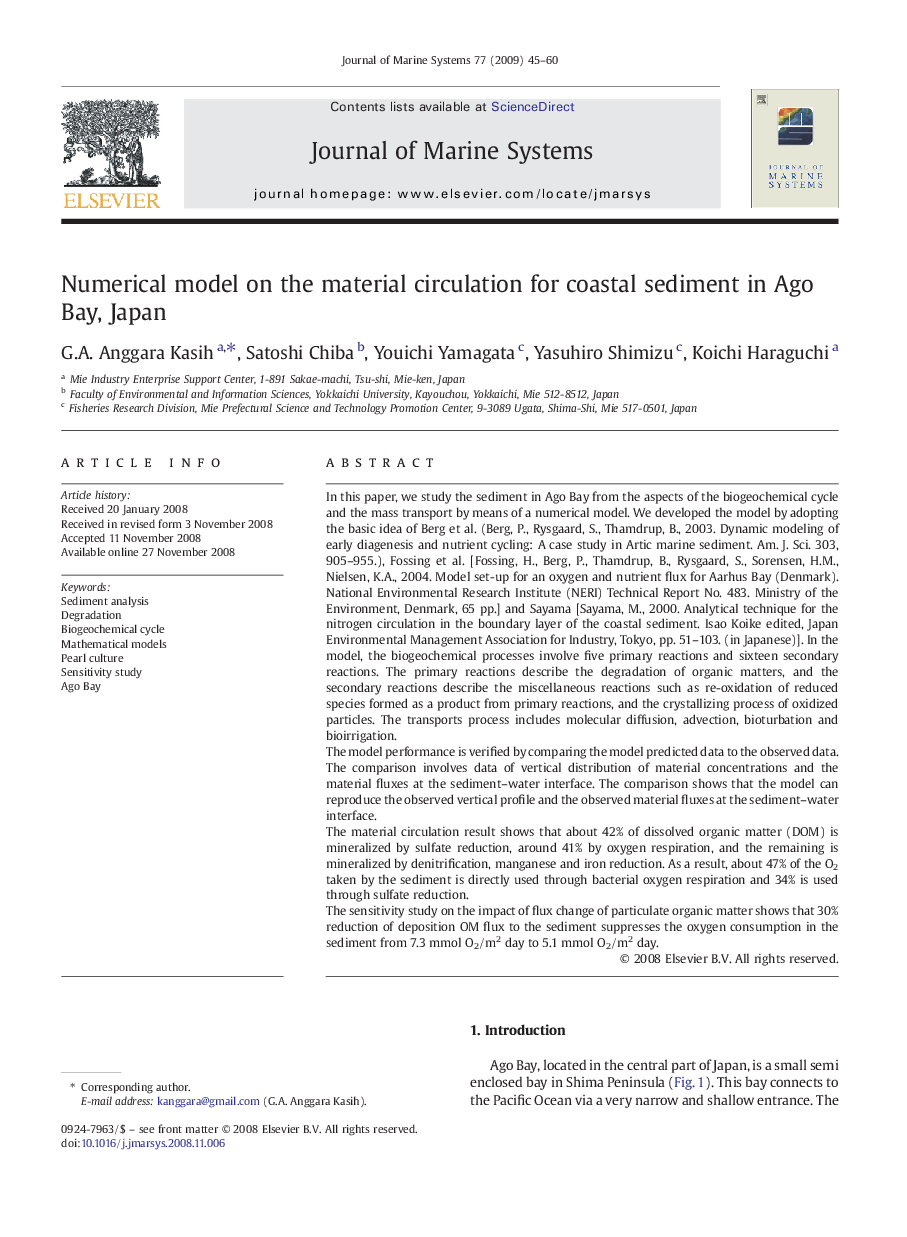| کد مقاله | کد نشریه | سال انتشار | مقاله انگلیسی | نسخه تمام متن |
|---|---|---|---|---|
| 4549042 | 1627338 | 2009 | 16 صفحه PDF | دانلود رایگان |

In this paper, we study the sediment in Ago Bay from the aspects of the biogeochemical cycle and the mass transport by means of a numerical model. We developed the model by adopting the basic idea of Berg et al. (Berg, P., Rysgaard, S., Thamdrup, B., 2003. Dynamic modeling of early diagenesis and nutrient cycling: A case study in Artic marine sediment. Am. J. Sci. 303, 905–955.), Fossing et al. [Fossing, H., Berg, P., Thamdrup, B., Rysgaard, S., Sorensen, H.M., Nielsen, K.A., 2004. Model set-up for an oxygen and nutrient flux for Aarhus Bay (Denmark). National Environmental Research Institute (NERI) Technical Report No. 483. Ministry of the Environment, Denmark, 65 pp.] and Sayama [Sayama, M., 2000. Analytical technique for the nitrogen circulation in the boundary layer of the coastal sediment. Isao Koike edited, Japan Environmental Management Association for Industry, Tokyo, pp. 51–103. (in Japanese)]. In the model, the biogeochemical processes involve five primary reactions and sixteen secondary reactions. The primary reactions describe the degradation of organic matters, and the secondary reactions describe the miscellaneous reactions such as re-oxidation of reduced species formed as a product from primary reactions, and the crystallizing process of oxidized particles. The transports process includes molecular diffusion, advection, bioturbation and bioirrigation.The model performance is verified by comparing the model predicted data to the observed data. The comparison involves data of vertical distribution of material concentrations and the material fluxes at the sediment–water interface. The comparison shows that the model can reproduce the observed vertical profile and the observed material fluxes at the sediment–water interface.The material circulation result shows that about 42% of dissolved organic matter (DOM) is mineralized by sulfate reduction, around 41% by oxygen respiration, and the remaining is mineralized by denitrification, manganese and iron reduction. As a result, about 47% of the O2 taken by the sediment is directly used through bacterial oxygen respiration and 34% is used through sulfate reduction.The sensitivity study on the impact of flux change of particulate organic matter shows that 30% reduction of deposition OM flux to the sediment suppresses the oxygen consumption in the sediment from 7.3 mmol O2/m2 day to 5.1 mmol O2/m2 day.
Journal: Journal of Marine Systems - Volume 77, Issues 1–2, April 2009, Pages 45–60